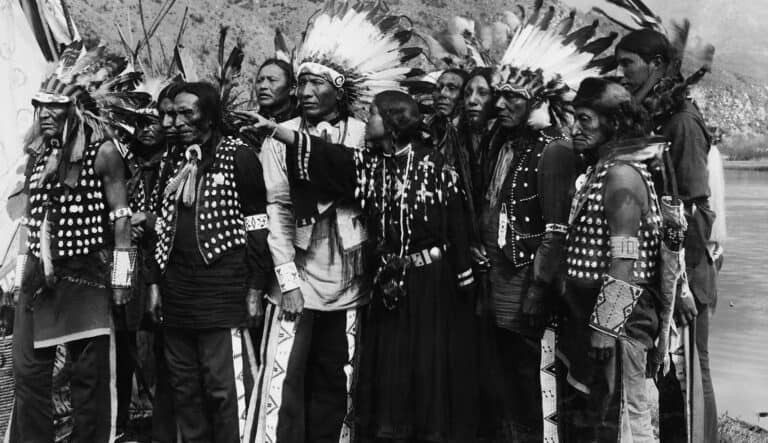The latter part of the 1800s, marked by the Second Industrial Revolution, significantly altered the global landscape through remarkable technological advances.
This era gave rise to pivotal machinery, means of transportation, and communication devices that continue to have a lasting impact on society.
Below is an overview of such innovations:
- Electricity Utilization: Innovations like the dynamo led to widespread usage of electrical power, lighting up cities and powering industries.
- Steel Production: Bessemer process advancements greatly increased steel output, bolstering construction and infrastructure.
- Oil Industry: The refinement of petroleum catalyzed the development of the internal combustion engine and gave momentum to automobility.
- Machine Tools: Enhanced precision in tool-making facilitated mass production and the manufacture of standardized interchangeable parts.
- The Assembly Line: Popularized by manufacturing, it significantly boosted the efficiency of production processes.
- Professionalization of Science: The 19th century formalized the role of the scientist, a term coined during this period reflecting the specialized nature of scientific study.
Important 19th-century inventions impacting communication and lifestyle include:
- Telegraph: Revolutionized long-distance communication by transmitting messages almost instantly across vast distances.
- Typewriter: Streamlined the process of writing and producing documents, leading to more efficient clerical work.
- Telephone: Transformed personal and business communication by allowing direct, real-time conversation over long distances.
These technological achievements not only revolutionized their time but their foundational principles continue to shape modern society.
Key Developments of the Early 19th Century
- 1800: The Jacquard loom was devised by Joseph Marie Jacquard, revolutionizing textile manufacturing with its ability to weave intricate patterns.
- 1800: Alessandro Volta created the first true battery, laying the groundwork for electrical innovation.
- 1804: The concept of lighting via coal gas was legally secured by Friedrich Winzer.
- 1804: A pioneer in locomotive engineering, Richard Trevithick, experimented with steam propulsion but did not achieve a practical design.
- 1809: The arc lamp, a pioneering form of electric illumination, was introduced by Humphry Davy.
1810-1819
During the decade from 1810 to 1819, there were several significant advances in technology and science:
- In 1810, Peter Durand introduced the tin can, revolutionizing food storage.
- George Stephenson unveiled the first operative steam locomotive in 1814.
- Also in 1814, Joseph von Fraunhofer developed the spectroscope, and Joseph Nicéphore Niépce captured the first photograph using a camera obscura.
- The following year, 1815, saw Humphry Davy’s invention of the safety lamp for miners.
- René Laënnec devised the stethoscope in 1816, which became essential in medical diagnostics.
- By 1819, Samuel Fahnestock had secured a patent for the soda fountain, a novelty that would become a fixture in drugstores.
1820—1829
During this decade, a diverse range of innovations with long-lasting impact emerged:
- 1823: In Scotland, Charles Mackintosh developed the waterproof coat, widely known as “the Mac”.
- 1824: Michael Faraday, a professor, created the first rubber balloons as playful objects.
- 1824: The English patent for Portland cement, crucial for modern construction, was obtained by Joseph Aspdin.
- 1825: William Sturgeon introduced the electromagnet, significant for electrical engineering.
- 1827: John Walker brought forth friction matches, an innovation that greatly simplified the ignition process.
- 1827: The microphone, enhancing sound transmission, was invented by Charles Wheatstone.
- 1829: W.A. Burt designed the typographer, an early step towards mechanical typing devices.
- 1829: Louis Braille presented a tactile writing system, enhancing literacy and accessibility for the visually impaired.
1830—1839
During this decade, a wave of creativity led to significant inventions.
- In 1830, Barthelemy Thimonnier introduced a basic version of the sewing machine.
- The following year marked Cyrus H. McCormick’s creation of the first commercially successful reaper, an essential advancement in agricultural efficiency.
- In the same year, Michael Faraday achieved a milestone with the electric dynamo, paving the way for electrical engineering.
- Henry Blair, receiving his second US patent, devised the corn planter in 1834, which assisted in optimizing agricultural processes.
- That same year, the groundwork for refrigeration technology was laid by Jacob Perkins with his invention of an ether ice machine.
- Further mechanical advancements in 1835 included Solymon Merrick’s patent for the wrench and Charles Babbage’s development of a mechanical calculator, which would become a cornerstone in computing.
- The year 1836 saw notable contributions in transportation and weaponry: Francis Pettit Smith and John Ericcson collaborated on the invention of the propeller, and Samuel Colt shaped modern firearms with the first revolver.
- Communication technology leapt forward in 1837 with Samuel Morse’s invention of the telegraph, and Rowland Hill’s postage stamp revolutionized mail service.
- At the close of the decade, 1839 witnessed Thaddeus Fairbanks’ creation of platform scales for accurate weight measurement, Charles Goodyear’s discovery of vulcanized rubber, and Louis Daguerre’s development of the daguerreotype, a precursor to photography.
1840—1849
- 1840: The creation of the blueprint was accredited to John Herschel, a researcher from England.
- 1841: Samuel Slocum became recognized for his legal claim on the stapler device.
- 1844: John Mercer, another Englishman, developed an enhancement method for cotton thread, benefiting its dye attraction and strength.
- 1845: Innovations in the sewing industry were marked by Elias Howe’s introduction of the modern sewing machine.
- 1845: Introducing resilient pneumatic tires crafted from vulcanized rubber, Robert William Thomson obtained a patent.
- 1845: The use of anesthesia during a tooth removal was notably first performed by Dentist Dr. William Morton from Massachusetts.
- 1847: The medical field was significantly advanced when Ignaz Semmelweis, a Hungarian, brought forward the application of antiseptics.
- 1848: The comfort of dental patients was enhanced with Waldo Hanchett’s patent for the dentist’s chair.
- 1849: The convenience of fastening fabrics was revolutionized with Walter Hunt’s design of the safety pin.
1850—1859
- 1851: The invention of the Singer sewing machine by Isaac Singer revolutionizes fabric stitching.
- 1852: The development of the gyroscope by Jean Bernard Léon Foucault enhances navigational technologies.
- 1854: John Tyndall presents the foundational concepts behind fiber optics.
- 1856: Louis Pasteur introduces pasteurization, significantly advancing health sciences.
- 1857: George Pullman creates the Pullman sleeping car, improving long-distance rail travel.
- 1858: Hamilton Smith patents a design for a rotary washing machine.
- 1858: Jean Joseph Étienne Lenoir designs an internal combustion engine powered by coal gas, later securing a patent.
1860—1869
- 1861: Elevator braking mechanisms are improved significantly by Elisha Graves Otis, enhancing elevator safety.
- 1861: Linus Yale develops a compact and secure cylinder lock mechanism.
- 1862: Richard Gatling secures a patent for his rapid-fire machine gun design.
- 1862: Alexander Parkes formulates the earliest type of synthetic plastic.
- 1866: J. Osterhoudt introduces a tin canister with an integrated key opener.
- 1866: The concept of self-propelled underwater munitions is pioneered by Robert Whitehead, known as the torpedo.
- 1867: Alfred Nobel receives a patent for dynamite, an advanced explosive material.
- 1867: Christopher Scholes designs a precursor to contemporary typing devices.
- 1868: A system to enhance train safety, known as air brakes, is devised by George Westinghouse.
- 1868: Robert Mushet makes strides in metallurgy with the creation of tungsten steel.
- 1868: J.P. Knight conceptualizes the traffic signal to regulate vehicular flow.
1870—1879
- 1872: A.M. Ward introduces the earliest mail-order shopping catalog.
- 1873: The invention of barbed wire by Joseph Glidden.
- 1876: Inventions transforming communication and industry:
- Telephone by Alexander Graham Bell.
- Practical four-stroke engine by Nicolaus August Otto.
- Bissell’s carpet sweeper patented by Melville Bissell.
- 1878: Breakthroughs in entertainment and illumination:
- Cylinder phonograph by Thomas Edison.
- Initial steps towards modern cinema by Eadweard Muybridge.
- Sir Joseph Wilson Swan develops a prototype electric lightbulb.
- 1879: Edison improves illumination with the first market-ready incandescent light bulb.
1880—1889
The final decade of the 19th century was marked by significant advancements that still resonate today. In 1880, the convenience of restroom hygiene was enhanced with the introduction of toilet paper by the British Perforated Paper Company. During the same year, John Milne developed the modern seismograph, improving our ability to detect and understand earthquakes.
Only a year later, in 1881, photography took a leap forward when David Houston patented roll format camera film.
1884 saw a surge of innovations:
- Lewis Edson Waterman crafted the first reliable fountain pen.
- L. A. Thompson thrilled the masses by establishing the very first roller coaster in the U.S. on Coney Island.
- The modern retail experience began to evolve with James Ritty’s invention of the mechanical cash register.
- Steam power gained efficiency with Charles Parson’s introduction of his patented steam turbine.
As 1885 dawned, personal transport was revolutionized.
Karl Benz brought forward the first functional automobile powered by an internal combustion engine, while Gottlieb Daimler introduced the first gas-engine motorcycle.
By 1886, cultural and automotive milestones were reached when John Pemberton unveiled Coca-Cola and Daimler created the world’s first four-wheeled automobile.
The year 1887 was marked by Heinrich Hertz’s radar invention, Emile Berliner’s gramophone, and the creation of the first wearable contact lenses by F.E. Muller and Adolph Fick.
Finally, 1888 was distinguished by Nikola Tesla inventing the alternating current motor and transformer, setting the stage for the electrification of the world.
1890—1899 Innovations
- 1891: Creation of the moving staircase, now commonly known as the escalator, by Jesse W. Reno.
- 1892: Rudolf Diesel designs an engine powered by diesel, securing a patent for it four years later.
- 1892: Sir James Dewar develops the vacuum flask, designed to keep substances at stable temperatures.
- 1893: Introduction of the fastening device known informally as the zipper by W.L. Judson.
- 1895: The Lumière brothers debut the Cinematographe, a versatile device serving as camera, processor, and projector, and host the first motion picture screening.
- 1899: J.S. Thurman obtains a patent for a motorized suction sweeper, a precursor to modern vacuum cleaners.
From 19th Century Ingenuity to Modern-Day Technologies
- Lighting: Incandescent bulbs originated in the 1800s, leading to widespread electric lighting.
- Communication: Early telephones and typewriters laid groundwork for global connectivity.
- Textiles: Sewing machines from the 19th century revolutionized garment production.
- Entertainment: Phonographs were the forerunners to digital music players.
These innovations, initially brought to life in the 1800s, now exist in advanced forms.
Inventors and creators from that era provided foundations for developments in computing, mobile communication, and media streaming that shape contemporary life and stimulate ongoing innovation.










